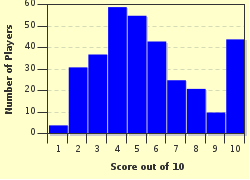Quiz Answer Key and Fun Facts
1. On 27 November 1095 Pope Urban II preached in Clermont in France urging Christians to reconquer Jerusalem and the Holy Land from the Muslims, and the spring of 1096 saw an explosion of violence against some Jewish communities. In which region was this most marked?
2. The bishops actively encouraged the forced conversions of Jews and the killings in 1096.
3. From 1144 onwards Jews were increasingly subject to the 'blood libel'. What did this allegation involve?
4. The coronation of one of the medieval English kings sparked off serious and prolonged violence against the Jews. Which king was it?
5. The Church sent out mixed messages about the Jews. In 1215 the (Fourth) Lateran Council decreed that all Jews had to wear a distinctive badge on their outer clothing.
6. In the Middle Ages the Jews were expelled from England. Which king ordered their expulsion?
7. In the course of the Middle Ages it became increasingly standard practice for Jews in many towns and cities to live in ghettos (though this word was not used till c. 1600). Which of these was NOT normally a distinctive feature of Jewish ghettos?
8. This city had no ghetto during the medieval period but established one in 1555. Which was it?
9. One of the Reformers wrote a rabidly anti-Jewish book. Who was it?
10. In the 21st century one former Jewish ghetto remains architecturally almost completely intact, though not many Jews live there. Where is it?
Source: Author
bloomsby
This quiz was reviewed by FunTrivia editor
Exit10 before going online.
Any errors found in FunTrivia content are routinely corrected through our feedback system.

